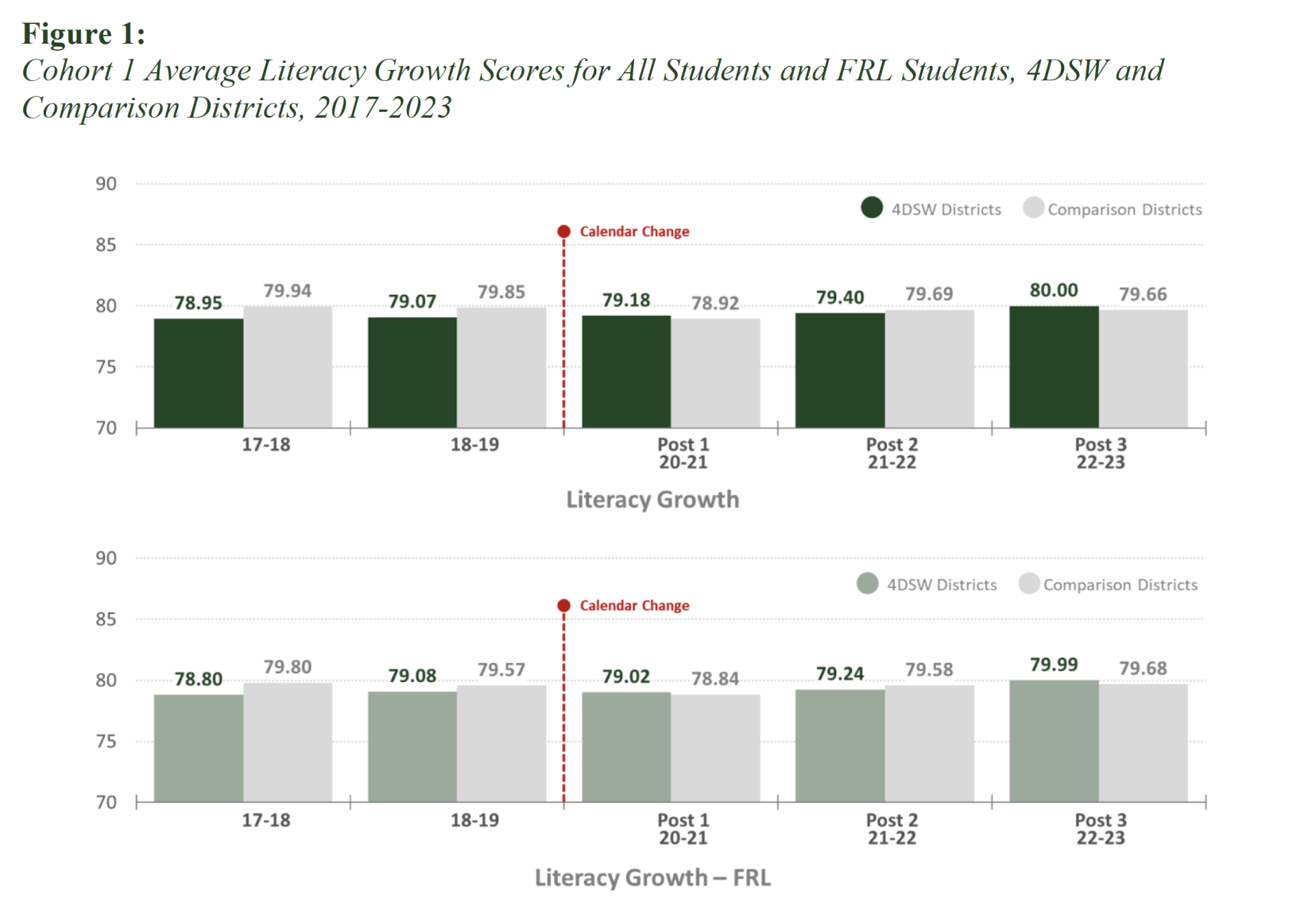Do you dream of a four day week? Or more breaks throughout the year? Some school districts in Arkansas are living your dream!
Currently, 34 school districts have school only four days a week, and 6 are on a year-round calendar with longer, more frequent breaks throughout the school year.
Since the passage of Act 688 in 2021, Arkansas school districts can choose to use an academic calendar other than the traditional 9-month model as long as students are still receiving at least 1,068 hours of instruction.
Folks have all kinds of opinions about these non-traditional calendars, and researchers examining how changing up the days teachers and students attend school haven’t reached a consensus. So here at OEP, are excited to partner with the Department of Education to find out how these calendar changes are working in Arkansas.
Our first report examined district leaders’ motivations behind making the change. The report we released today examines student outcomes in the districts that have made a change to a four day school week (4DSW) or year-round calendar (YRC). We suggest you read the full report and shorter policy brief, but we will hit the highlights here.
What outcomes did we check?
- Student academic growth in ELA and math (you know this is our preferred measure of how well schools are teaching students because it is not very correlated with student poverty rates)
- Student proficiency rates in ELA and math
- Student absenteeism
- All outcomes were examined for students overall and for students eligible for free and reduced-price lunch (FRL), a proxy for poverty.
How can we compare across districts?
- We matched each district that switched to a 4DSW or YRC with three similar districts that are using the traditional 9 month, 5 day a week calendar.
- Each district is unique, but we identified matching districts based on the number of students enrolled in the district and the percentage of those students eligible for free and reduced-price lunch, as well as academic growth and proficiency rates in literacy and mathematics for the two school years prior to calendar adoption.
- We examined trends in each outcome before and after the calendar switch, and followed up with statistical tests using a difference-in differences analysis. The figure below is shows the trends analysis for literacy growth scores for the districts that switched to 4DSW for the 2020-21 school year.

What did we find?
- Overall, students in 4DSW districts are demonstrating statistically significantly higher levels of academic growth in literacy than students in comparison districts. Students in 4DSW districts are not statistically higher or lower than students in the comparison districts in academic growth in math, literacy and math proficiency rates and absenteeism rates.
- Overall, students in YRC are demonstrating statistically significantly lower levels of attendance and literacy proficiency than students in comparison districts. Students in YRC districts are not statistically higher or lower than students in the comparison districts in academic growth in literacy and math or math proficiency rates.
What does all that mean?
Essentially, our results indicate that the academic performance of students in districts that have switched to a four day school week isn’t being helped or harmed by the change. After all it’s the same kids, in the same classrooms, with the same teachers, for the same number of instructional hours, so it would be a surprise to find that re-arranging the hours to fit into four longer days had an immediate impact on student academic outcomes. The increased literacy growth rates in 4DSW are a positive outcome that may be a reflection of more intentional blocking of time for in-depth instruction in those longer days.
There is some evidence that students in districts that have switched to year-round calendars may be experiencing negative outcomes. Statistically significantly lower literacy proficiency rates and attendance rates than similar districts are concerning. We really need more information though because only a small number of districts use YRC, and we only have one year of post-calendar data for them. Academic outcomes in YRC districts, however, are something we want to keep an eye on.
What about non-academic outcomes like teacher recruitment and retention or student and teacher well-being?
While learning in the main focus of schooling, there are many factors that contribute to (or detract from) students’ success. We are examining changes in teacher recruitment and retention and would love to partner with districts to develop and administer surveys that will capture student and teacher perspectives. Just reach out to us at oep@uark.edu!
